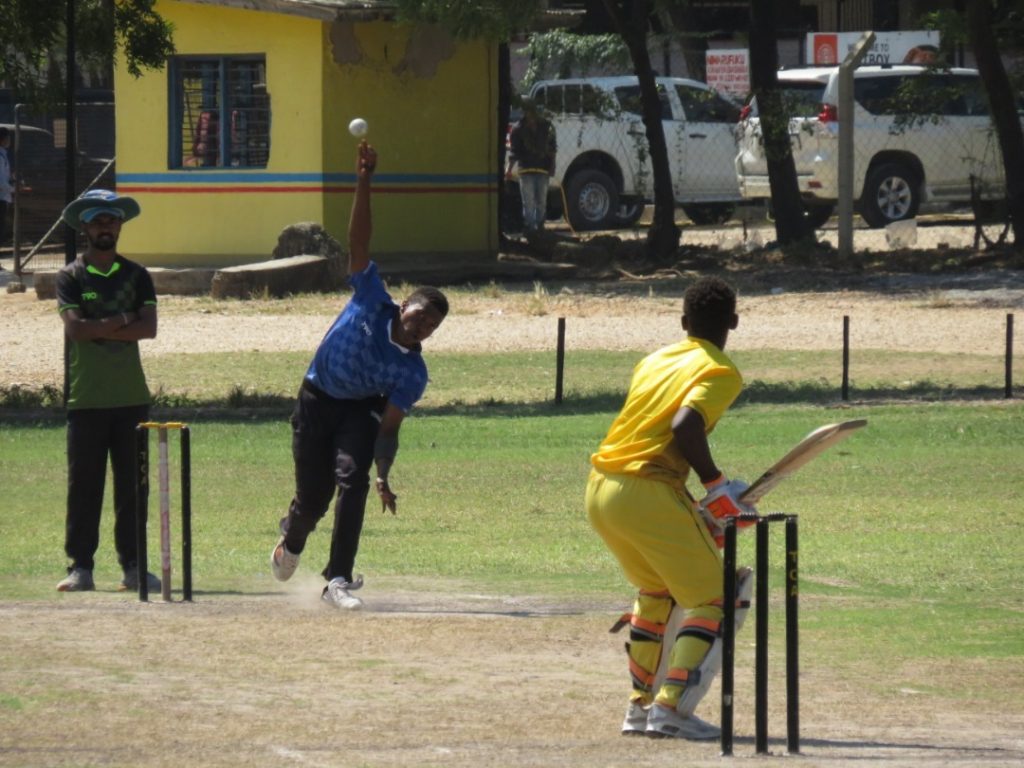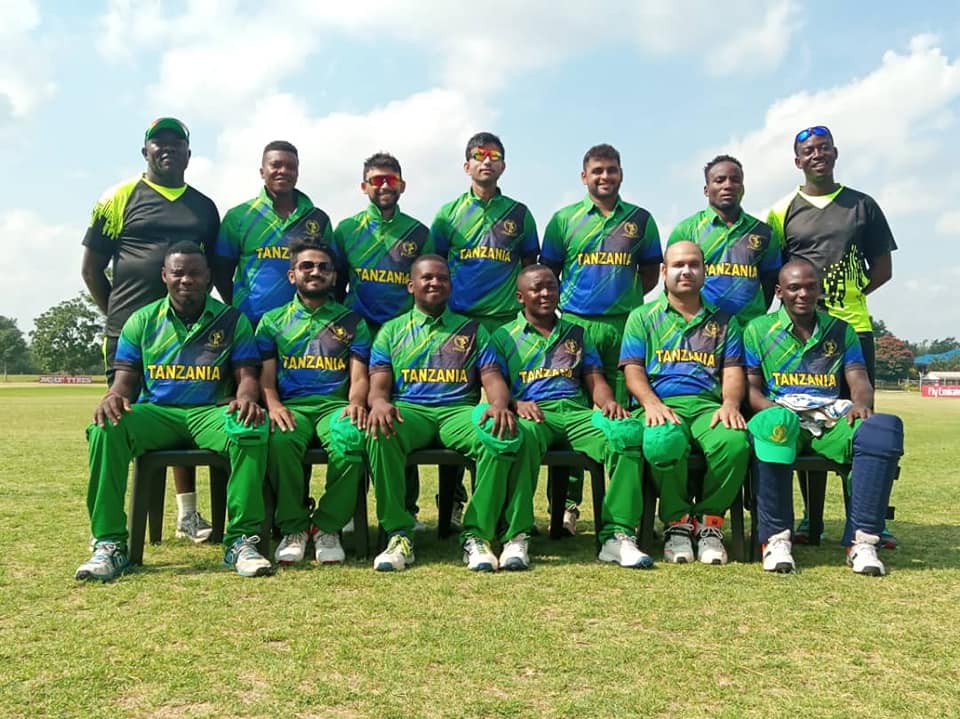Domestic Structure and Challenges
The conversation then turns to the topic of domestic cricket. While capital Dar es Saalam still serves as the sport’s epicentre with numerous clubs and a boisterous cricket scene, TCA have made considerable progress with spreading the game regionally, according to Salim.
“We now have 18 centres [established cricket hubs with participating public and private schools] all over the country, in cities like Morogoro, Tanga, Arusha and even in Mwanza. Having these leagues take place in regional cities improves playing standards. And it also encourages clubs in Dar es Saalam to recruit cricketers from this regional talent pool.”
“Our main aim is to take the game to the grassroots. Over the years we have always been fighting the notion that cricket is just an Asian game, that it belongs to a certain ethnic community. We want to break that mindset totally. We want to get into the public school system and the engagement that we have been getting from them lately has been much higher,” Salim articulates.

There are also challenges related to funding. Most of the funding that TCA receives comes from the ICC, so it is forced to operate on a very tight budget. “Funding is definitely the biggest hurdle to grow the sport. It limits us in terms of what we can do. Most funding we do receive goes towards investing in infrastructure and equipment,” says the media and information officer.
”Growth in Tanzanian cricket will come if the national team is doing well. That is how you can get recognised. If you are doing well internationally, you are attracting sponsors and scouts who can give opportunities to players to participate in franchise tournaments. One day we hope we can have a home-grown Tanzanian player who gets selected to play in the IPL,” he continues.
The inclusion of cricket in the 2023 African Games for the first time presents another growth and funding opportunity for TCA. Salim confirms that the organisation is currently working on sending a team to this event. Considering the exclusive nature of ICC tournaments, he states that competitive opportunities like these are worth their weight in gold for Tanzanian Cricket and the African continent in general.

TCA App
On the digital front, TCA have also made impressive strides with the creation of a dedicated app (Tanzania Cricket) which tracks match scorecards and player performances across the various divisions and domestic competitions. Scrolling through the app one can find a dizzying array of senior and junior competitions (10, 20, 40 and 50 overs) taking place for both genders. What’s more, each individual scorecard had linked player profiles displaying their photo, batting/bowling stats as well as detailed performance analytics.
Such level of detail is really astounding for an Associate Cricket app. Salim wholeheartedly agrees with my positive assessment and states that the app makes talent identification and player scouting a lot easier for national team selectors.
“Since 2020, we have streamlined all the nationwide structured leagues on our app. It has allowed us to connect with the local public on a larger scale via the use of digital technology and social media. I feel very proud, it has been our best achievement so far,” he says.
Salim’s personal journey into cricket
Lastly, the conservation turns to Salim’s own personal cricketing journey. He admits that his involvement with cricket was bit of an accident. “Growing up I was just another football loving kid in football mad Tanzania. Having played local club football right through my teens and early 30s, I was getting a bit wary of the sport’s physicality. So, I decided to gather some of my football teammates who liked cricket and we started playing indoor cricket.”
In 2014, Salim became one of the key founders of the Lions Cricket club; however, it was his idea of hosting an indoor cricket tournament that was the unlikely catalyst for the club’s stratospheric growth.

“To our surprise, the indoor cricket tournament attracted many players and teams, including national team players and organizers of the Dar es salaam regional league. Upon seeing the talent in our group, we had many suggestions that we register our club for a structured cricket league with the hard ball. in 2016 we participated for the first time with zero experience in real cricket,” he says.
The rookie team had a rough start losing many games but have tasted success over the years through hard work and sheer doggedness. Lions now plays in the top division of club cricket and is widely regarded as one of the top 10 clubs in Tanzania, having won several trophies. The club’s success caught the eye of the incoming TCA Chairman Premji Pindoria and Vice Chairman Shaheed Dhanani, who consequently offered Salim the role of Media and Information officer.
“I was humbled with the job offer; it was very overwhelming. The last two years have been such an incredible journey. I feel lucky to be working a job which allows me to be involved in growing the game that I have come to love. The way I see it nowadays, Football was my first love, but cricket has become like my second wife,” Salim chuckles.
Mt Kilimanjaro and its special connection to cricket
Dubbed the “Mountain of Greatness” in the Swahili language, the snow-capped, 5,895 metres high Mt Kilimanjaro in Tanzania is the highest free-standing mountain in the world. While, it is a major magnet for tourism and adventurers from around the globe, it also shares a special connection to cricket. It was here on its majestic slopes in 2014, that a new world record was set for the highest altitude cricket match ever played. Appropriately nicknamed the “Mt Kili Madness”, the record-breaking event saw the players, umpires, porters, medics, spectators, media and independent witnesses battle altitude sickness and frigid temperatures to arrive at the intended game venue, after a weeklong trek up the volcano.
This touring party included famous cricketers like Makhaya Ntini, Ashley Giles and Heather Knight with the latter duo captaining the two opposing teams. Once they reached the flat crater just below the summit at a dizzying altitude of 5,752 m (18,871 ft) above sea level, the players set up a makeshift pitch to play a 10 over a side game under official ICC rules and conditions. The match held greater significance for the development of cricket in the African continent, beyond the borders of Tanzania. Funds raised from the game went towards the construction of the iconic Gahanga stadium in Kigali, Rwanda, which now functions as one of the principal hosts for ICC Africa Qualifying events as well as Kwibuka T20 tournaments.
You’re reading Emerging Cricket — brought to you by a passionate group of volunteers with a vision for cricket to be a truly global sport, and a mission to inspire passion to grow the game.
Be sure to check out our homepage for all the latest news, please subscribe for regular updates, and follow EC on Twitter, Facebook, LinkedIn and YouTube.
Don’t know where to start? Check out our features list, country profiles, and subscribe to our podcast.
Support us from US$2 a month — and get exclusive benefits, by becoming an EC Patron.






